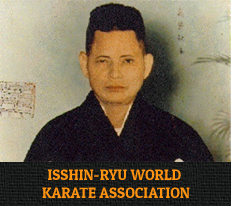-
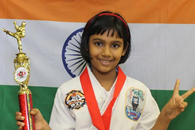
btf world tournmanets winners
-
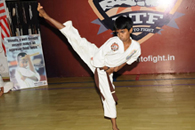
BTF 9th tournaments 2016
-
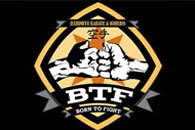
BTF Courses Offered
-

IWKA world tournaments winners
born to fight Champion 2015
-

born to fight Champion 2015
born to fight Champion 2015
-
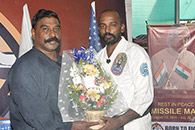
BTF 8th Tournament 2015
born to fight 8th Tournament 2015
-
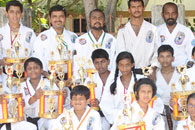
born to fight Black Belt Camp 2015
born to fight Black Belt Camp 2015
-
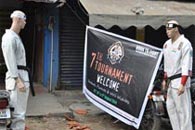
BTF DOJO TOuRNAMENT 2014
born to fight 7th tournament in chennai
-
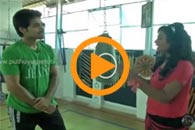
-
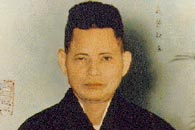
ABOUT BTF
MenuWeapon Kata
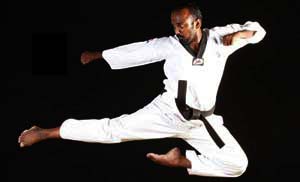
The bo is a round staff. It was used as a walking aid and comes from the hoe handle, shovel handle, etc. The people converted the bo into a weapon. The bo is normally as long as the karate-ka is tall. Traditionally, the bo was handled from the left side. Master Shimabuku brought the fight side into focus.
Tokomeni No Kun (Bo #1): This kata is named after Master Tokumeni who virtually created the bo as it is known in modern karate.
Urashi (Bo #2); In this kata, the student is taught to draw the opponent's attention by the front of the bo until he is hit with the rear end of the bo which has been brought around with a vertical butt stroke.
Shishi No Kun (Bo #3): The kata contains 130 movements combined from the first two bo kata. It also brings in the foot movements along with the use of both ends of the bo.
The sai is a three-pronged weapon used for defense and attack (similar to a sword) and for throwing (similar to a spear).
The sai is effective against the samurai sword and the bo (both short and long). Karate masters used to carry three sais. Two were held in the hands, the shaft extending the length of the forearm, knob hidden in the hand. The third sai was hooked in the belt and was used only after one of the hand sais was thrown.
Kusan-Ku Sai (Sai #1); The use of the sai is incorporated into the empty hand Kusanku kata. The moves are basically the same in both kata without the kicks. This kata introduces the karate-ka to the sai. In this kata, the sai is fighting the samurai swordsman.
Chantan Yara No Sai (Sai #2); The sais in this kata are used to defend against a bo. Among the techniques, the karate-ka learns to hook the bo with the foil (short prong), and to counter attack with the knob and the shaft.
A Tonfa looks much like a police mans night stick. Usually 18 to 21 inches in length with a handle protruding 90 degrees about 3 inches from one end. The Tonfa is thought to have originally been the handle for a grindstone.
Chei fa (also known as Hamahiga No Tuifa): This kata teaches the student to fend off attackers with bos using blocks and strikes with the tonfas.
Kobudo Kumite Weapons Sparing - There are also two pre-arranged forms in which two karateka spar with weapons. One with bo against bo and one with sai against bo.
Bo Sai/kumite (Bo vs Sai);
Bo Bo/kumite (Bo vs Bo);
History of Nunchaku
There is still debate among martial artists as to the true history of the NUNCHAKU. The version that is largely accepted is that the Chinese brought a weapon known as the shuang chin kun or Shuang Tse when they settled in the area in Okinawa in the 13th and 14th century.
During the Japanese occupation of Okinawa some 350 years ago , invading warlords prohibited the carrying and usage of the samurai sword , spears and guns. So the Okinawans turned to agricultural implements and used them as weapons. An instrument which was used as a bit for horses and which resembled the shuang chin kun of the Chinese settlers was converted into a very effective weapon to defend against armed groups. The nunchaku was constructed with two hardwood sticks which were secured by rope braided from horse tails. Today the sticks are connected with nylon rope or chain.
Because of its innocent appearance the nunchaku can be carried and even concealed in one's body without attracting much attention. The practitioners of karate incorporated the techniques in karate as it was very effective against a mob or a few armed assailants.
Bruce Lee must be credited with popularizing this weapon through his movies in the 1970's.
History of Nunchaku
The nunchaku handles should be made of hard wood though rubber padded nunchakus for practice and light weight metal nunchakus for demonstrations are also used. The length of the nunchaku should normally equal the distance from the middle of the hand to the elbow. However the size of the nunchaku should be based on the individual student's height and arm power.
Every part of nunchaku is potentially effective in combat. The bottom and tops of the nunchaku known as 'kontoh' and 'kontei' are used to jab and spear; the upper and lower handles known as the jukonbu and the kikonbu are used in swinging strikes and the middle area known as the chukonbu is used for blocking and striking. The nunchaku rope known as the 'himo' or the chain known as the 'kusari' serves to punch and choke. The holes of the nunchaku are known as the 'ans'.
Types of Nunchaku
- Round circular nunchaku - Marugata nunchaku
- Octagonal nunchaku - Hakakukei nunchaku
- One side long other side short nunchaku - So-setsu-kon nunchaku
- Halved nunchaku - Han-kei nunchaku
- Three pieced nunchaku - San-setsu-kon nunchaku
- Four pieced nunchaku - Yon-setsukon nunchaku
Sparring with Nunchaku
The popularity of the nunchakus has created a separate martial popularly as 'Nunchaku Kobujustu' and nunchaku enthusiasts created rules and regulations for sparring(kumite) and many styles with Japanese and okinawan origin have also reluctantly accepted nunchaku sparring as a legimate method of exchanging techniques.
Forbidden acts
- Attacks to groin and neck; attacks with both handles in one hand.
- Blocking nunchakus with hand and legs;
- Three times not performing continuous techniques for more than three second gaps.
- Wasting time, going out of the match area repeatedly, malicious attacking, impolite behavior and arguing with referee.
- Penalties are the same as in karate.
Forbidden acts
- Move out of circle
- Command opponents to run
- Rule: Spin weapon all around
- Pause and strike to kill
- Escape from fighting scene
- Dispose/hide your weapon
- Return with reinforcements
- Complain to police
Dojo Location
-
Kilpauk Address
106/26,Landons road
Kilpauk, chennai -10
[ Behind Ega theatre Near ayyappan temple
Opposite reserve bank quarters Next noodles theory.]
Phone : 044 - 25323914 , 45583914
Mobile : +91 82487 52737, +91 98413 23914, +91 95662 79977
Email: borntofightschoolofkarate@gmail.com,
ayyappansensei@yahoo.co.in
-
Adyar Address
3/5 3rd Floor Teacher's Colony,
Adyar Chennai 600 020.
Lift Available
Phone : 044 - 24423914 , 42323914
Mobile : +91 82487 52737, +91 98413 23914,
+91 95662 79977
Email : borntofightschoolofkarate@gmail.com,
ayyappansensei@yahoo.co.in
-
Anna Nagar Address
Plot No. 869, New No.11,
J Block, 17th Main Road, Anna Nagar West,
Chennai 600040
[ Land Mark: Little Millennium Pre-School
and opposite to ASR Badminton Academy ]
Mobile : +91 82487 52737, +91 98413 23914,
+91 95662 79977
Email : borntofightschoolofkarate@gmail.com,
ayyappansensei@yahoo.co.in
-
bangalore Address
1st floor,
452, immadhialli main Road ,
white field , bangalore- 560067
Next to EB office
Opposite to star Bazzar
Above to Amrit medical shop
Mobile : +91 82487 52737, +91 98413 23914,
+91 95662 79977
Email : borntofightschoolofkarate@gmail.com,
ayyappansensei@yahoo.co.in
-
Ladakh Address
SECMOL
Leh & ladakh ,india
Email: borntofightschoolofkarate@gmail.com,
ayyappansensei@yahoo.co.in

 iso 9001:2015
iso 9001:2015 Chief Instructor
Chief Instructor THE PLACE OF POSITIVE VIBRATION
THE PLACE OF POSITIVE VIBRATION
